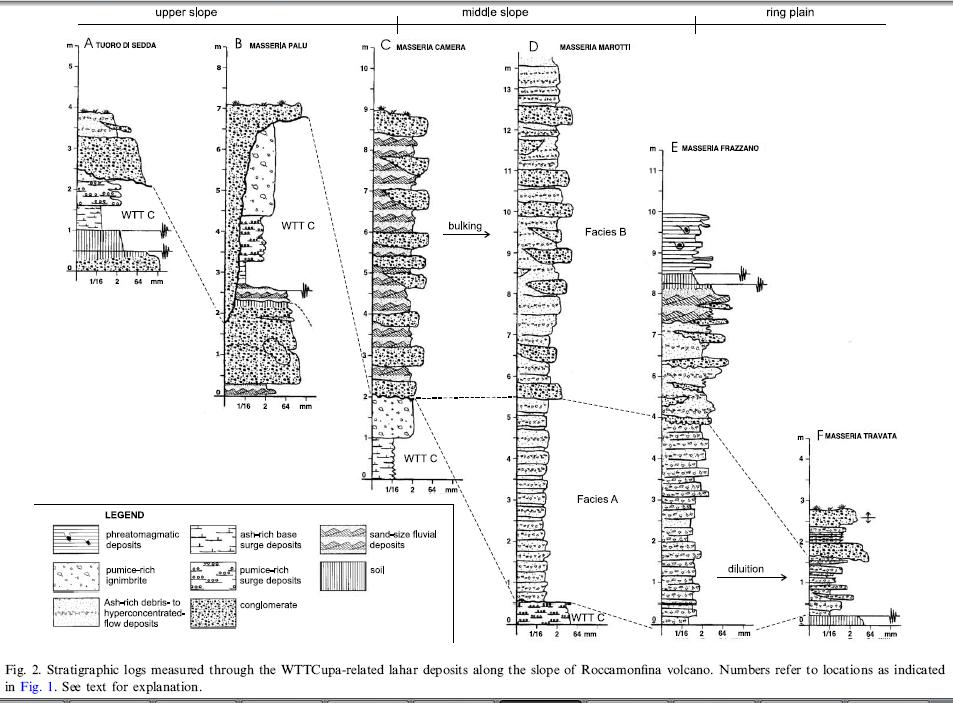
The term lahar covers a wide variety of flows from debris flows to hyper concentrated flows. These surging flows are anywhere from 20% to 60% or greater sediment laden water that are driven by gravity and fluid pressure { (Lavigne and Suwa 2004) } . There is little observed data on active lahar flows, with almost all information about lahars derived from their deposits. Lahars follow the path of least resistance, creating a series of partially overlapping depositional areas. Once the lahar has stopped moving, the aqueous solution evaporates, leaving behind the lahar deposit. The deposit dries in a similar manner as cement, leaving little time for the sediments to settle in the semi-aqueous flow material. A coarsening upward gradation is produced, with little to no sorting. Occasionally, this gradation changed from reverse gradation to normal gradation (referred to as reverse-to-normal grading) { (Giordano, De Rita et al. 2002) }.
Lahar deposits are very similar to mudflows and pyroclastic flows. They can be differentiated from mudflows by their abundance of volcanic debris. Mudflows tend to have very little to no volcanic components, whereas lahars are mostly composed of volcanic debris {site textbook}. Pyroclastic flows (or surges) contain superheated glass, and show little to no evidence of hydration at the time of flow. Lahar deposits contain little to no superheated glass, and have evidence of water saturation. This evidence of saturation includes tree trunks and branches (and other similar types of debris) that are parallel to the bedding surface, indicating the direction of downstream.The basic steps to form a lahar deposit involve the eruption or series of eruptions of a volcano (or volcanoes). If the volcano has an icecap or a snowcap, then a lahar flow, followed by its deposition, occurs when the heat of the eruption melts the solidified water. If the volcano does not have a snowcap or glacier nearby to melt at the time of eruption, then there are several ways a lahar flow can still occur. If there is an elevated lake or steam above the volcaniclastic debris fallout, there is the possibility that the eruption could weaken or even break the lake wall or riverbed. { (Lavigne and Suwa 2004) } Massive amount of water from a broken wall (like a broken dam) will mix with the volcanic debris to form a lahar. This breakage does not have to happen at the time of eruption, the wall could be weakened by the eruption, or could even break by an earthquake following the eruption. The other method for generating a lahar flow is massive rainfall. If enough rain falls on the slope that the volcanic debris has accumulated on, then a lahar or even a series of lahars can occur. A lahar flow can occur hundreds of years after an eruption { (Giordano, De Rita et al. 2002) }.
Unsaturated lahars are also possible according to some geologists. This grouping of high sediment laden dry debris flows as lahars depends upon the country, and is not universally accepted. This type of lahar flows and deposits are not accepted as lahars in the United States, and are usually referred to as just pyroclastic flows.